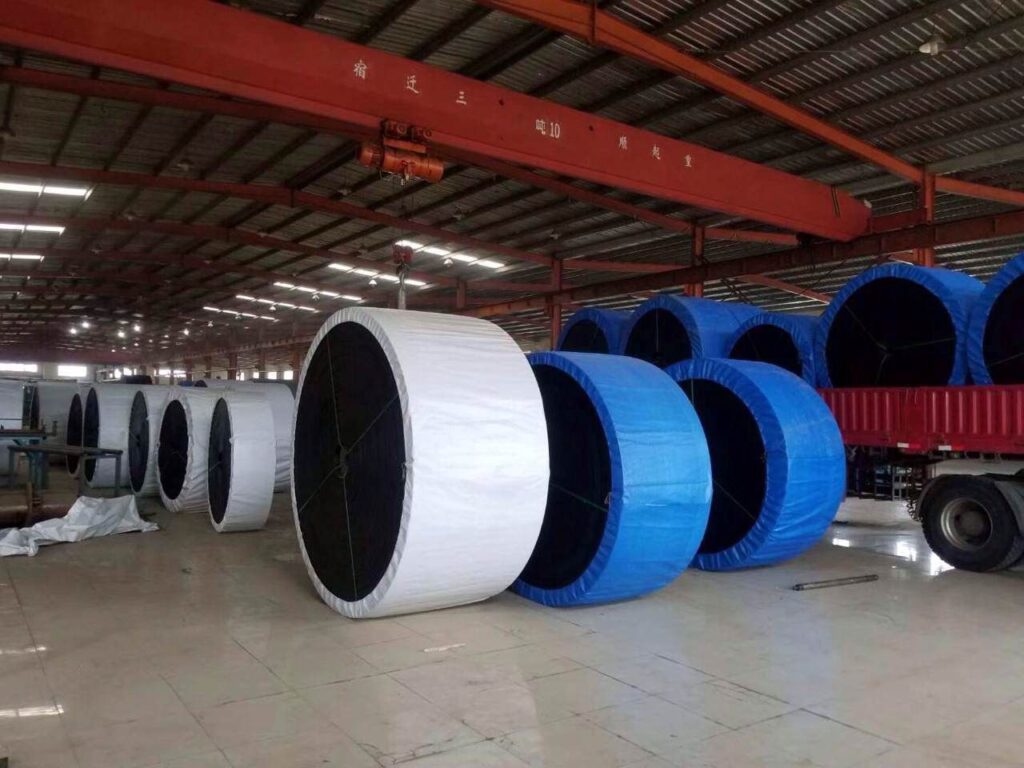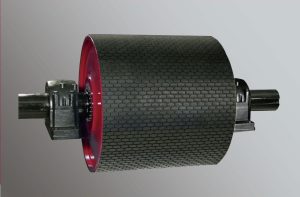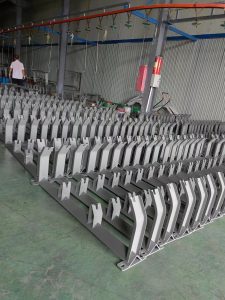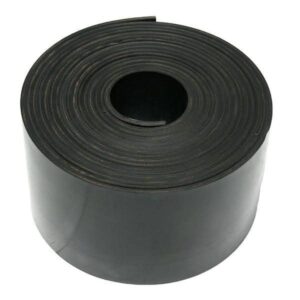



1. Belt Width
The width of the conveyor belt determines its carrying capacity and the application scenario. Common widths are as follows:
- 300mm: Suitable for small systems and light material transportation (e.g., light industrial applications).
- 400mm: Commonly used for medium and small conveying tasks, generally for transporting medium amounts of material.
- 500mm: Widely used in mining, metallurgy, and chemical industries, suitable for medium loads.
- 600mm: Suitable for transporting ore, sand, and coal, commonly used in mining and related industries.
- 800mm: Suitable for larger and bulk material transportation or higher throughput.
- 1000mm: Used for heavy-duty, large flow transportation tasks, common in large-scale mining and steel plants.
- 1200mm, 1400mm, 1600mm, 2000mm: These widths are typically used in very large-scale industrial applications, suitable for ultra-high throughput in mining, metallurgy, and large construction sites.
2. Belt Thickness
The thickness of the conveyor belt directly affects its durability, impact resistance, and load-bearing capacity. Typical thicknesses vary based on the number of layers and the type of belt:
- Standard Conveyor Belts: Typically range from 4mm-12mm, suitable for light to medium load and general material transportation.
- Reinforced Conveyor Belts: For EP and NN types, thickness ranges from 6mm-25mm, depending on strength requirements, with more layers increasing the thickness.
- Heavy-duty Conveyor Belts: For large-scale mining, these belts usually range from 10mm-40mm. Custom thicker belts can be made for specific high-strength applications.
3. Layers and Material Structure
The number of layers and the material composition of the belt determine its durability, strength, and adaptability:
- Single-layer belts: Made of single-layer rubber, suitable for light-load applications.
- Multi-layer belts: Comprising multiple layers (steel cord, polyester, nylon, etc.), they are used in medium to heavy-duty conveyor systems.
- Steel cord belts: Used for high-strength, heavy-duty transportation tasks, particularly in large mines, ports, and long-distance conveyors.
4. Conveyor Belt Materials
- Rubber Conveyor Belts: The most common type, suitable for general material transportation with good abrasion resistance and elasticity.
- PVC, PE Conveyor Belts: Used for light industrial and food applications, with good resistance to corrosion.
- Polyester (EP) and Nylon (NN) Conveyor Belts: These belts offer high strength and tensile capacity, suitable for heavy loads and high-throughput material transportation.
- Steel Cord Core Belts: Used for high-strength, heavy-duty, and long-distance conveying systems.
5. Belt Surface Types
- Smooth Surface Belts: Suitable for transporting dry and relatively flat materials.
- Patterned Belts (Chevron, Wave, etc.): Designed for inclined transportation, preventing material slippage.
- Grooved Belts: Used for special material handling, offering slip-resistant and grip features.
6. Durability and Special Features
- High-Temperature Resistant Belts: Suitable for high-temperature environments, such as steel manufacturing or smelting, typically can withstand 150°C-400°C.
- Flame Retardant Belts: Used in coal mines, chemical plants, and other flammable environments, typically complying with national or international flame-retardant standards (e.g., MSHA, DIN22129).
- Oil-Resistant Belts: Designed for transporting oil-based materials, offering excellent oil resistance.
- Antistatic Belts: Used in environments where controlling static electricity is necessary.
- Acid and Alkali Resistant Belts: Suitable for chemical industries, resistant to corrosion from strong acids and alkalis.
7. Carrying Capacity
The load capacity of the conveyor belt is typically determined by the width and material strength. Common standards are:
- Light-duty Conveyor Belts: Suitable for transporting lighter materials, with a carrying capacity of 50-500kg/m².
- Medium-duty Conveyor Belts: Carrying capacity of 500-1500kg/m², commonly used in general mining, metallurgy, and chemical industries.
- Heavy-duty Conveyor Belts: Carrying capacity greater than 1500kg/m², suitable for transporting larger and heavier materials in demanding environments.
Summary
The selection of a conveyor belt is closely related to the application scenario and involves considering factors such as:
- Belt width and thickness;
- Carrying capacity and materials;
- Special features (such as high-temperature resistance, flame retardance, oil resistance, etc.).
By selecting the appropriate conveyor belt based on material characteristics, operational conditions, and load requirements, efficiency can be maximized while reducing maintenance costs.
This translation captures the key technical details about the common types and specifications of conveyor belts.








